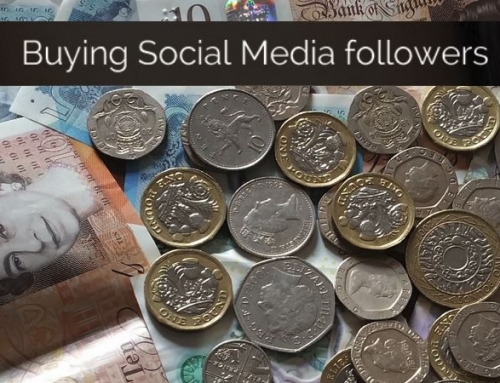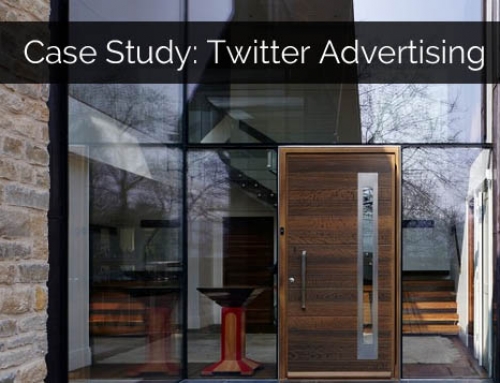Why use Twitter for business?
The UK user base for Twitter is growing every day. Every time you see one of the huge Saturday night TV shows (X Factor, The Voice, etc etc) promoting their Twitter handles or hashtags, more of their mass-market audience think “hmm, what’s that all about” and many of them will go ahead and set up an account. And Twitter is addictive, so what starts with following a feed from Saturday night TV can easily become a big part of the 36 hours an average UK user spends online each month.
Many heavy internet users now rely entirely on their online experience for information – they’ve not bought a local paper in years, and usually fast forward through TV ads. So, you’re only going to get the chance to influence those people if your business is active and well connected on Twitter.
Plus, the way Twitter works makes it almost unique as a fast communication medium with your business’s current (or future!) customers. Here’s an example of all the things one brand could’ve discussed with their customers, in just a few hours on twitter…
I already use Twitter, but how do I use it for my business?
If you’ve already got to grips with the basic functions of Twitter, but aren’t sure how to apply it to the commercial world, here is a super-simple, five-minute outline of how to create a strategy for your business on Twitter.
Step 1: Look and learn
Before you do anything, take a look and see whether anyone is already discussing your company or products on Twitter. Use the Advanced Search function for a short-term snapshot, or there are other social media dashboard tools which can help with this – socialmention.com is one of our favourites.
What’s being said? Is there a bias towards customer service or support (for example, a lot of people complaining about a particular function of a software programme) or are people complimenting or just mentioning your company – either of which gives a great opportunity to develop a dialogue with your customers?
It’s also worth taking a look at what your competitors are doing – this is just as likely to highlight what won’t work as what will! Both of these exercises will help you with step 2.
Step 2: Twitter Objectives
Or, deciding what you want Twitter to do for you – and even more importantly, how you using it will benefit your customers. That’s the thing about social media, if you don’t offer some value to your followers, they’ll tune you out pretty quickly.
The detailed answer to Step 2 can be complex and will be different for most businesses. If you found that the answer to “who’s talking about us” in Step 1 was “nobody”, then you might want to start by changing that – even the smallest neighbourhood boutique or restaurant will benefit from happy customers giving them some love on Twitter.
Think carefully about what you could do (“find and reply to people asking for recommendations in my sector“) or say (“let followers know in advance when we’ve got a sale coming up“) which will benefit the Twitter community.
As an example, we’re always happy to help anyone who asks us questions on Twitter, but as every third Twitter account belongs to a “social media guru” we tend to focus on providing a great information feed. So although there are masses of spammy, low quality articles out there around social media, our followers know that following us on Twitter will help them find just the most important, carefully selected articles which are relevant to them as business marketers.
Step 3: Your perfect follower
Just sending out great content or being helpful won’t get you an army of Twitter followers – at least not in the early days. You need to be a bit more proactive.
Create a “perfect follower” profile for your business. Does it matter if they’re male or female? How old they are? Where they live? How often they tweet, and how many followers they have? You may never come across Mr or Ms Perfect, but at least you’ll know what you’re looking for.
Step 4: Build your audience
Use your follower profile from Step 3 to set up some searches, so that you can find the right kind of followers either from their Bio information, or from the kinds of things they talk about in their tweets. Join in with their conversations, but politely and without pushing your business – imagine you’re standing next to them at a party and you won’t go too far wrong.
Step 5: A great content plan
Work out what makes great, shareable Twitter content for your particular business. If you’re a Bakery, your followers would probably appreciate recipes for delicious looking cakes – even if they’ll never get around to making them because they’re too busy.
That doesn’t mean that you’d send out nothing but recipes though. To keep things interesting, try and brainstorm at least four or five “themes” to talk about. Is all this starting to sound a bit like being in charge of a magazine? Then you’re on the right track.
Step 6: Be a good Twitter citizen
This one covers a multitude of sins, but the way you run your Twitter account REALLY reflects on your business. Everything from poor spelling to ignoring @ mentions may lead followers to draw negative conclusions about you. Spotting someone mentioning your product and thanking them, even if they didn’t mention your Twitter username, gives the opposite impression.
Avoid the negatives by checking in regularly, chatting to your “friends” on Twitter even when they’re not singing your praises, following back, and occasionally reviewing what you’ve sent out over the past month.
Then, you just need to figure out ways of creating extra positives and delighting your followers!
Get help
If you’re struggling to get from the outline above to a detailed plan for your organisation, our private Twitter training might help.
We come to your office and work through the whole shebang with you, from getting set up to fleshing out the outline strategy above. If you’re interested, here’s how to get in touch.






Leave A Comment